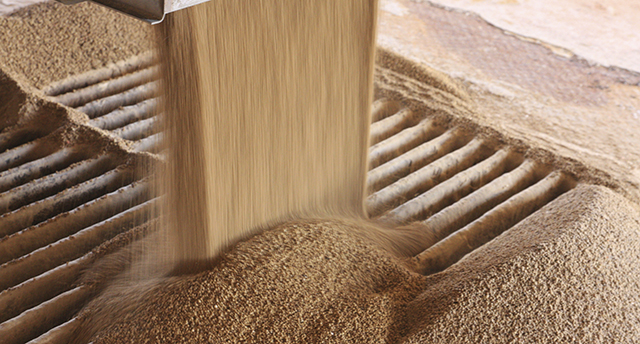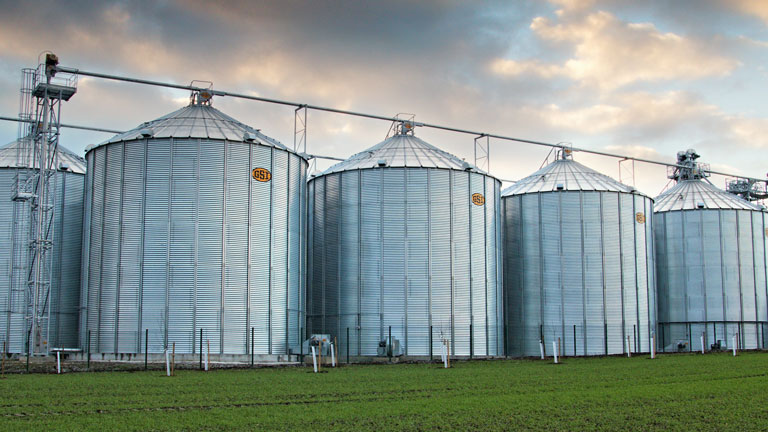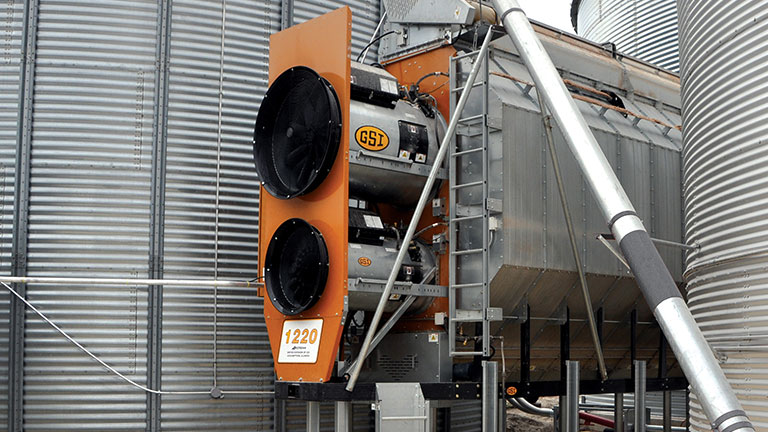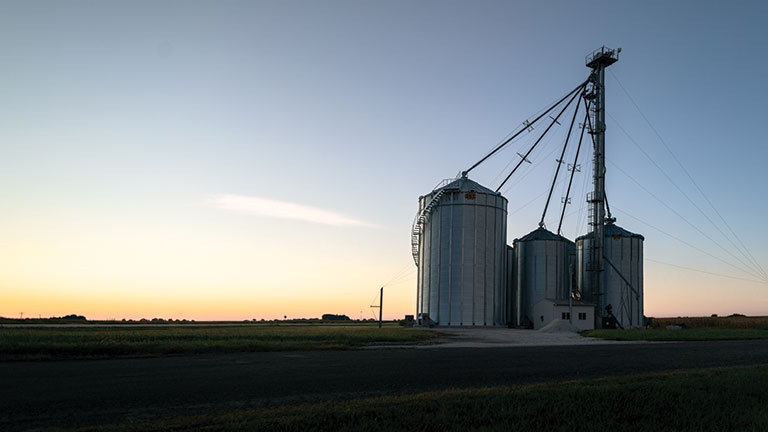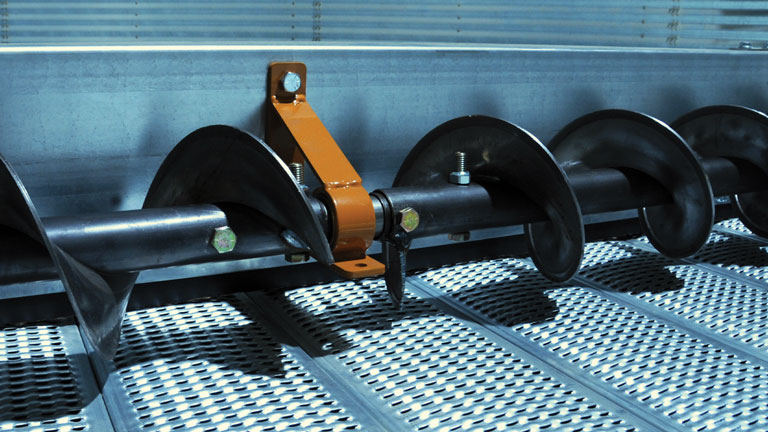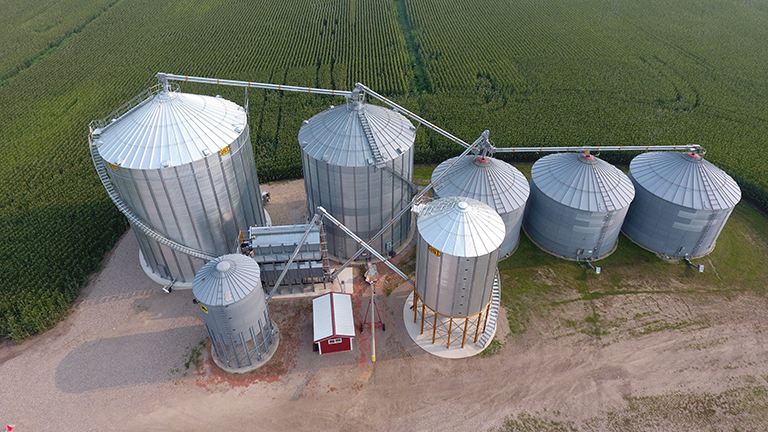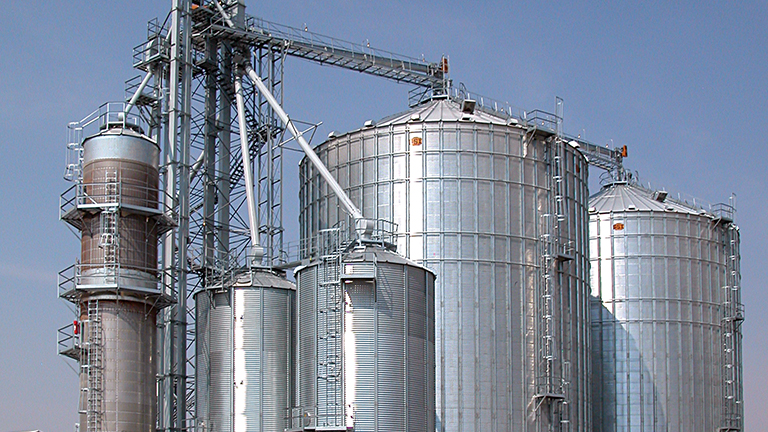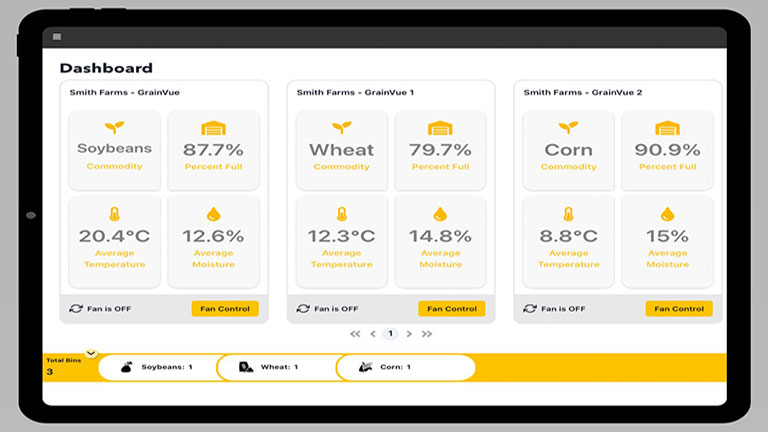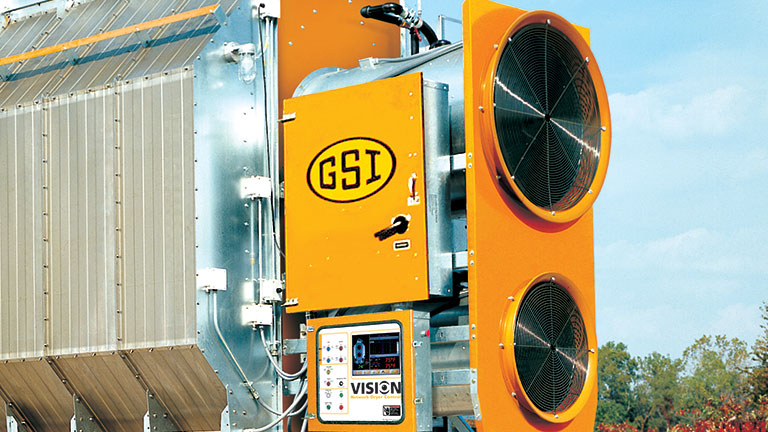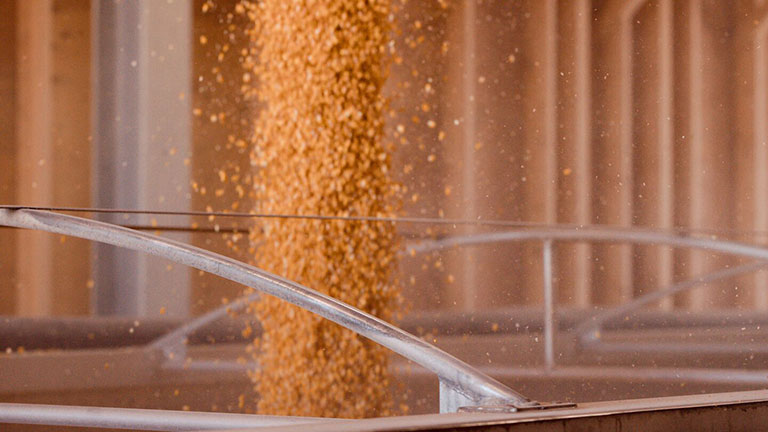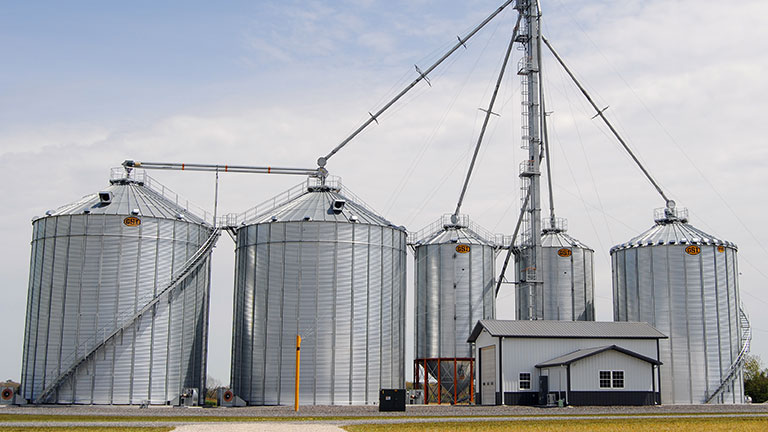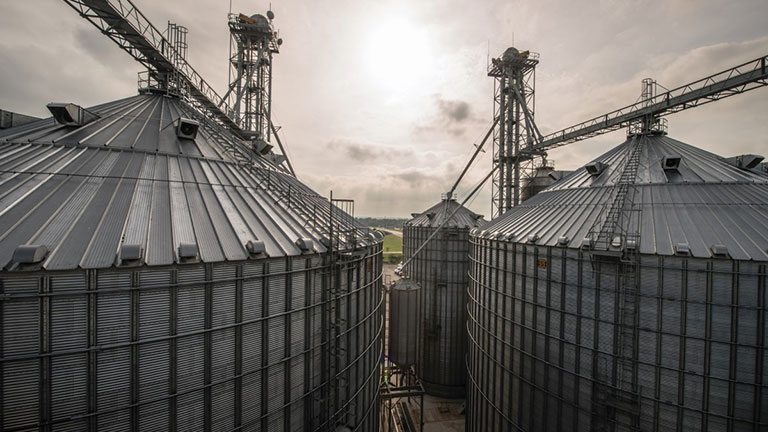For many farmers, conditioning or drying grain is an integral part of the harvest and storage process. Generally, conditioning happens within hours of harvest. By having the capability to dry down grain mechanically, farmers can harvest at higher moistures and store for extended periods without the concerns of grain damage and dockage.
What is conditioning
While grain can dry naturally, it takes a long time to do so. Conditioning, or mechanical drying, has three essential factors:
- Time
Long drying times at low temperatures reduce grain quality issues, but lower drying capacity. - Heat
Drying capacity increases as temperature increases, but grain damage can increase at higher temperatures. - Airflow
High airflow rates increase drying capacity but decrease fuel efficiency.
GSI dryers take into consideration all three parameters.
How to choose the best grain dryer for your farm
There are four primary dryer offerings from GSI:
- In-Bin Dryers
StirAtors, or in-bin dryers, are often used in short, smaller diameter bins (36 feet or less), and are an excellent option for producers who don’t need very much capacity and aren’t focused on high throughput. These dryers provide good fuel efficiency and superior quality for their size, but stirators require a fair amount of maintenance and management. Producers with in-bin dryers must understand the ambient conditions, humidity and temperature, and manually check grain moisture to ensure drying progresses. - Portable Dryers
Despite their name, portable dryers require a fixed installation. They can dry up to 4,000 bushels per hour and are a good fit for a wide range of operations. Usually easy to install, portable dryers have fewer infrastructure requirements – material handling, for example – than other dryers. These high-temperature dryers are less fuel-efficient than other models but can meet the needs of many applications. For drying sites requiring less noise, the quiet dryer provides whisper-quiet operation. - TopDry
A TopDry system provides excellent efficiency and grain quality while keeping the dryer and storage within a single unit. In a TopDry system, all drying occurs in the top portion of the bin before it falls further down for storage and cooling. With a maximum capacity of 2,100 bushels per hour, the system reclaims heat from the dried grain, improving fuel efficiency. TopDry can also serve as long-term storage at the end of the season. - Tower Dryers
Tower dryers are an excellent option for large farms and commercial operations.. They are more expensive to build than other options and carry some higher overall material handling costs. However, a tower dryer can dry up to 12,000 bushels per hour and improves efficiency by reclaiming heat from the dried grain.
GSI has the conditioning experts you need
Let the experience of the GSI team help you select the right dryer for your operation. With an extensive dealer network, GSI has the support system you need with a quality product that will last for years to come.
Contact your local dealer to learn more about which GSI dryer will make the most significant difference for your operation.

